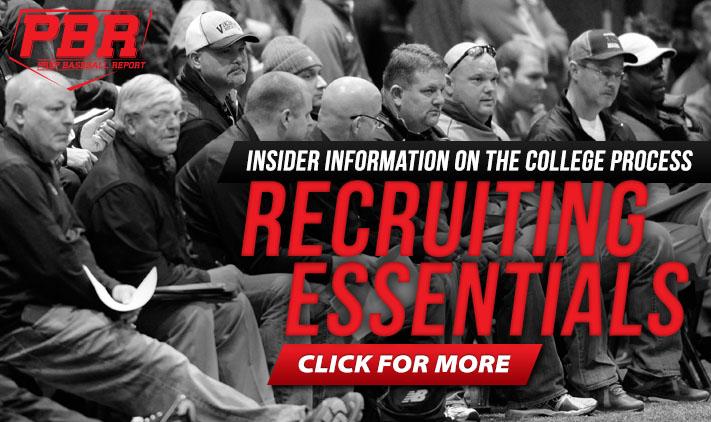Recruiting Essentials: Walking-On
August 15, 2017

By Brandon Hall
North Carolina Director of Scouting
There comes a point for most players where they will need to make a decision on where they will attend school and where, or if, they will play baseball after high school. For some, the decision is based on several schools, all of which the player sees himself attending in some fashion, selling the player on why their school is the best. For many players, they will learn about schools they have not heard of, have not visited, and maybe did not know existed, as they started the process.
There comes a point for most schools where they begin to max out their roster and scholarship budget. The school has made a run at players on their list, with a knowledge of their needs. As the school moves into the fall, and even into the spring, there may be needs on their roster that did not exist at the beginning of the recruiting cycle or even a week prior. The need may exist even if the scholarship budget is dried up.
Today we are going to examine the walk-on process. There are several types of walk-ons and the rules are different for schools as they are dealing with players that are not on baseball aid. Walk-ons are a necessary part of all programs, from Division I and Division II into the Junior College ranks. Baseball budgets are constrained by NCAA rules and by departmental restrictions. The restraints at the Division I level, require a minimum of eight walk-ons for a program to maximize their roster limit of 35.
As we look at the many types of walk-on players, remember that any player that is not receiving athletic aid (a baseball scholarship) is considered a “walk-on”. A player that may be a Top 100 player in the country and scored perfect on the SAT may receive a “full ride” academic scholarship and the baseball program of his choice does not need to use one of their scholarships on that player. That player is considered a walk-on. A three year player, on aid, is drafted in the top 10 rounds but decides to return to school for his senior year. The school has spent that player’s aid, with the player’s knowledge. There is not a scholarship available and the player returns for the senior year anyway… that player, a Top 10 round pick” is now considered a walk-on for the roster in his senior year.
